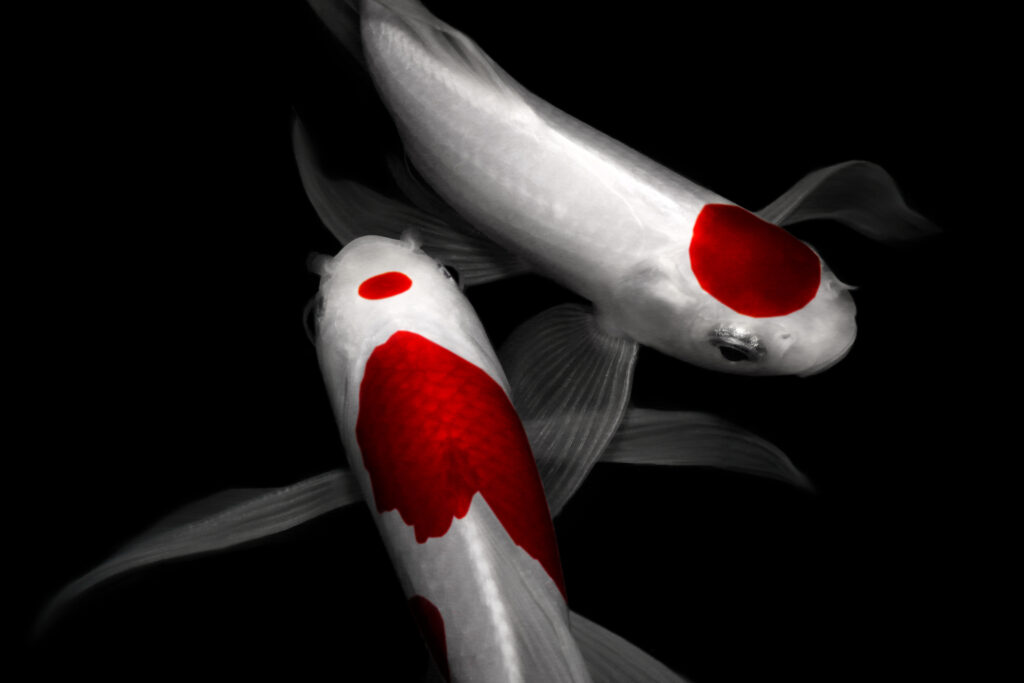
The Tancho Kohaku gets distinguished by a pristine white backdrop with a single bright red circle across the head. The Tancho crane, a rare and magnificent Japanese bird, is the source of the fish’s name. The Tancho crane has a red crown and is mainly white. The Tancho Kohaku koi may be regarded as lucky due to its link with this bird, symbolizing good fortune and longevity.
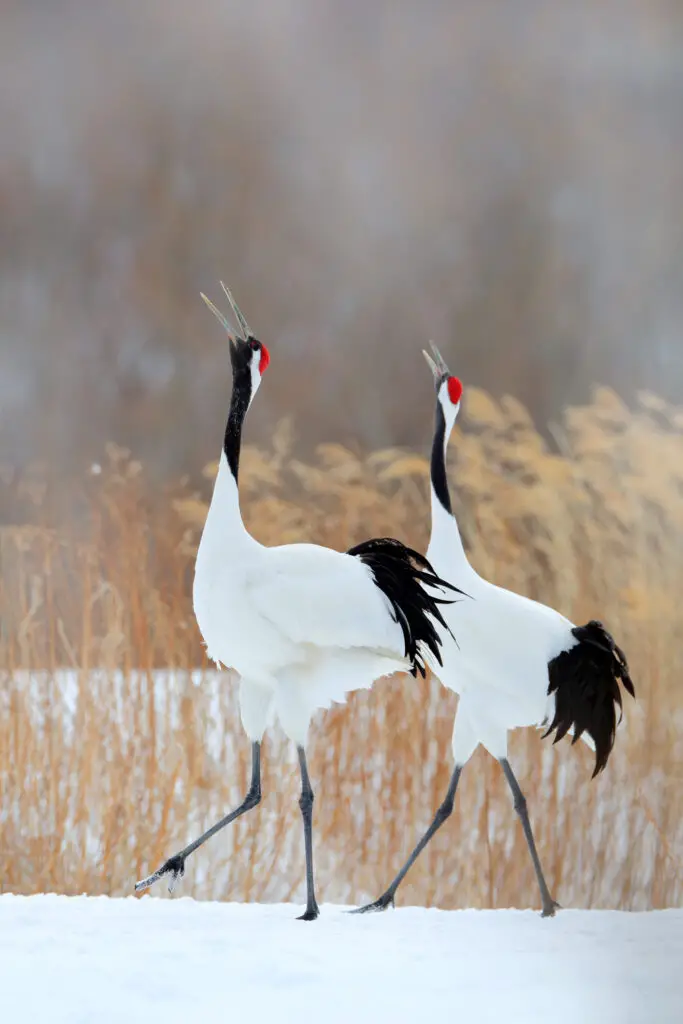
Tancho koi fish frequently sells for more than $1,000 due to its popularity. Tancho koi are popular among Japanese koi lovers due to the markings on their heads that resemble the Japanese flag. While some koi have red markings on their heads, the Tancho stands out because of its unmarked body.
There are many types of Tancho Koi, and we will cover a few of them in the article below. We will also briefly talk about the history of the Tancho Koi and where they originated. But that is not all; we will also discuss what your Tancho Koi needs and how to care for them properly.
Pro Tip: If you’re tired of wasting money and making costly mistakes on the koi-keeping hobby or are thinking about buying koi fish but don’t know where to start, I strongly suggest you check out this ebook. I recently read this ebook, and it contains SO much useful information, such as:
- 3 proven steps to identify koi fish diseases
- WARNING: 3 things you should NEVER do when it comes to caring for koi
- When to seek professional help when it comes to looking after your koi
Different Tancho Types

The Kohaku, Sanke, and Showa are three different types with a red mark on the head as a distinguishing trait.
- The Hi marking should be placed in the center of the head, away from the eyes. Traditionally, the most prized shape was a perfectly round spot, but hobbyists now look for different forms, such as diamonds, hearts, and ovals.
- Tancho koi, on the other hand, is most commonly linked with Kohaku, a white koi with red patterns; Taisho Sanke, a “white-based” koi with red and black; and Showa Sanshoku, a “black-based” koi with red and white, arranged differently than Taisho Sanke.
- Only these three (Goshiki) kinds make up the Tancho display class. Other Tancho-patterned Koi are classified with their essential variety. However, this may alter in the United States in the coming years.
- Sanke Koi and Showa Koi are frequently confused. The fundamental distinction between Sanke and Showa Koi is that Sanke Koi have Shiroji skin with Sumi accent markings. In contrast, Showa Koi have Sumi skin with Shiroji accent markings.
- Because Goshiki Koi and Hariwake Koi can have a red mark on their heads, it’s common to mix them up with Tancho Koi. On the other hand, these Koi do not get classified as Goshiki Koi. The Kohaku, Sanke, and Showa kinds are the only Tancho Koi allowed.
Tancho Kikusui Koi
The Hi should be a dark red color, while the rest of the fish should be white. On the body, there should be no other Hi.
Tancho Sanke Koi
The Taisho Sanshoku koi, also known as Sanke, was created in the late 1800s due to a harmless genetic mutation and was first bred in the 1910s during the Taisho Emperor’s reign. You can identify it with its brilliant red-and-white hue and black accent patterning.
Tancho Showa Koi
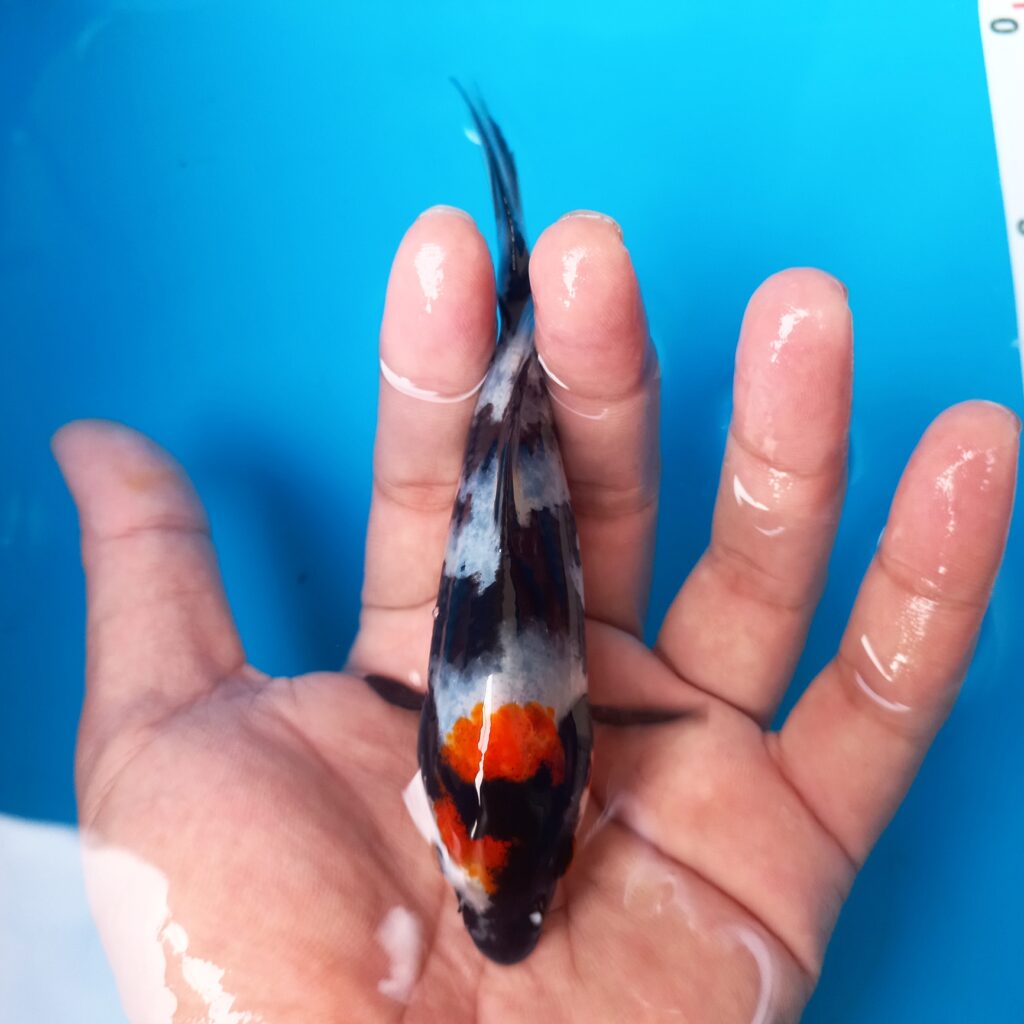
Showa koi must have black skin (Sumi) with red to red-orange markings (Hi) on top and white (Shiroji) markings. Showa is frequently confused with Sanke. Sanke koi have a white foundation skin with black dots that do not extend beyond the lateral line or onto the head. In contrast, Showa koi have black skin visible through white and red markings.
The History Of Tancho Koi
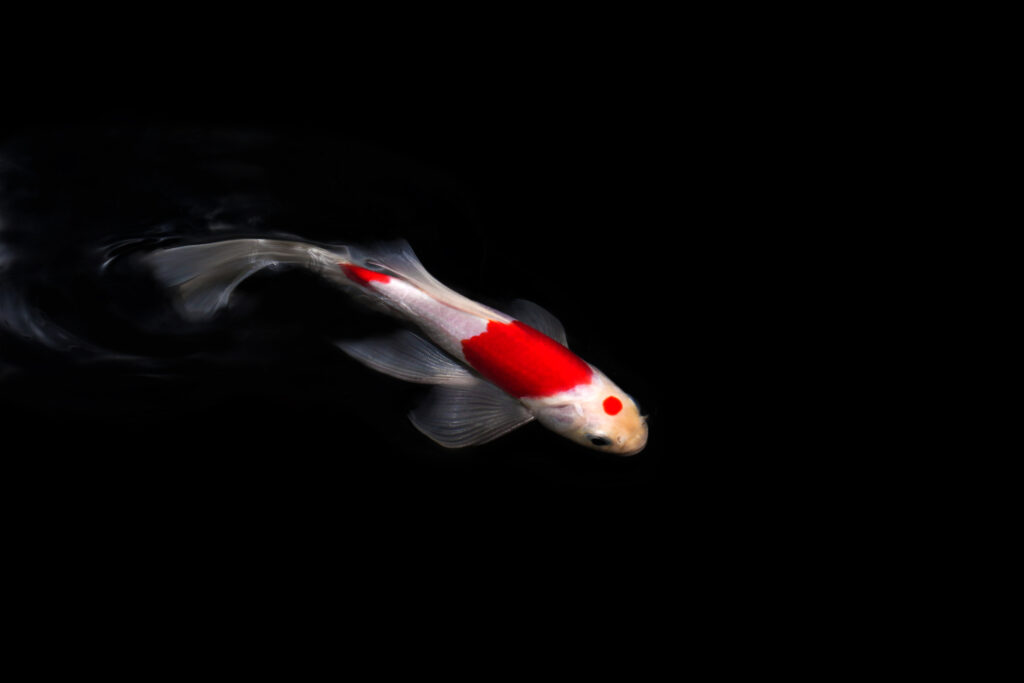
Koi have been around for over a thousand years, with current koi carp breeding procedures beginning in the 4th century in Japan and China. MtDNA sequencing has proved that Koi descended from the common carp (Cyprinus carpio) and that breeding commenced in East Asia. This theory was formerly hotly debated, and despite accumulating evidence, it still gets debated today.
Because of the aquaculture sector, the variety of koi varieties, patterns, and colorations has increased dramatically since the 4th century (301 to 400 AD). According to the DNA mentioned above findings, large-scale carp domestication and subsequent breeding to produce vividly colored variants and unique patterns started in China at approximately 6,000 B.C.
These bright, specifically bred carp were frequently given to persons in positions of political and economic influence as a gesture of goodwill and peace. That is how they first arrived in Europe and then America, where they became popular pets known as “koi” rather than emblems of power and luxury.
How Rare Is A Tancho Koi
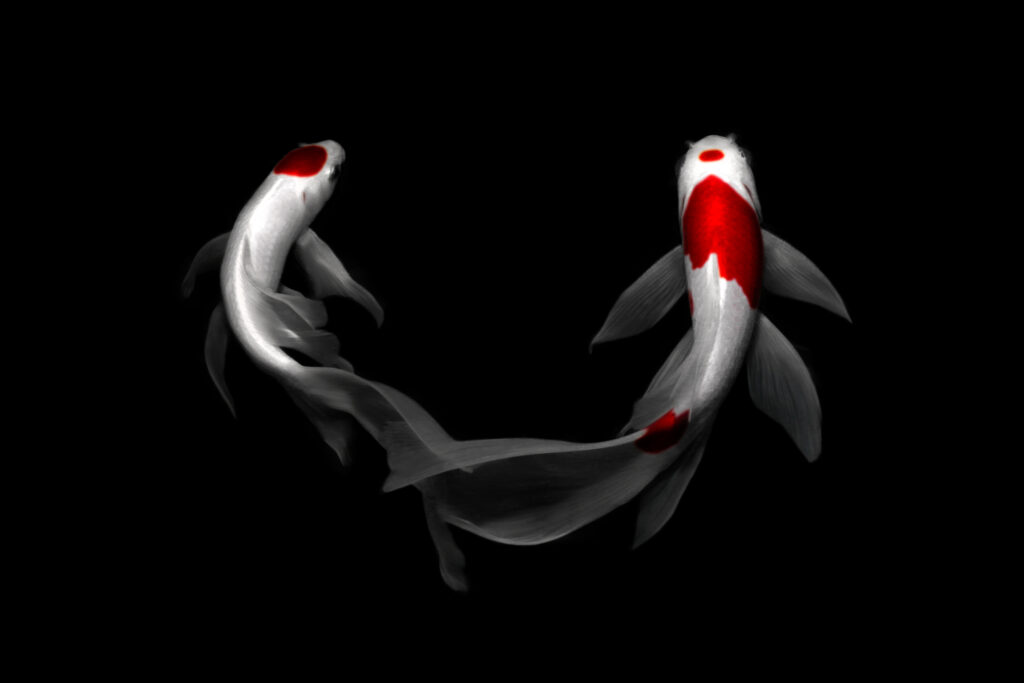
Good Tanchos are hard to come by, and the available ones are usually quite expensive. The unique ones are pricey. Tanchos, like cut flowers, have a short window of opportunity when they are at their best. Baby Tanchos are extremely dangerous, so if you want a Tancho, get a two-year-old or, better yet, a three-year-old. When it comes to Tanchos, too much may go wrong in the early stages of life. Either the hi disintegrates, or a stray hi appears on the remainder of the body.
Because of its rarity, a flawless Tancho koi is extremely valuable; this variety cannot get bred. Although you get better results when mating two adult Tanchos or a Tancho and a Kohaku. Even if a Tancho hatches, the odds of the baby meeting the standards of the perfect Tancho are small. The koi fry generated by mating adults gets classed as Shiro Muji, a nonmetallic white-scaled koi that lacks any hi.
While the hi is the most distinguishing feature of these Koi, it is not always present. Stress and bad water conditions might cause the Hi to vanish, much to the owner’s dismay. Once the red pigmentation disappears, it does not reappear.
In addition to the Tancho Kohaku, there are several well-known kinds. The Tancho Showa features a white base with black splotches on the body and a Hi on the forehead. The Black has a bias towards straying into the Hi. Another variation is Tancho Sanke, which is identical to Tancho Sumi. The difference between these two types is that the Sumi does not emerge on the head.
What Makes A Good Tancho?
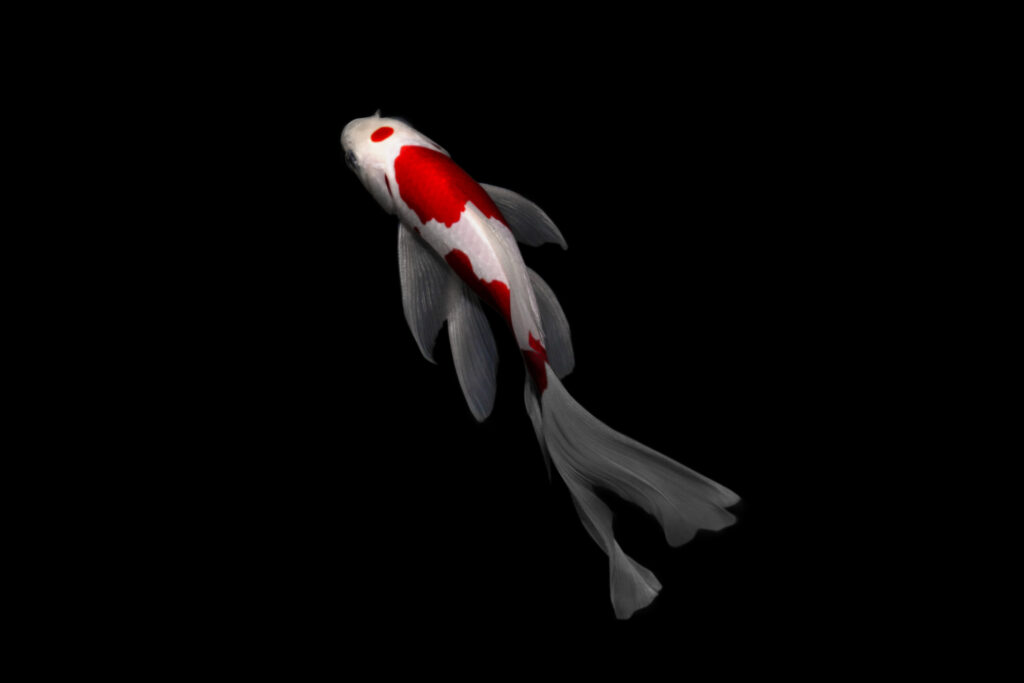
Tancho Kohaku is the most beautiful Tancho. The head of this Koi is pristine white with a crimson red pigmentation, or hi. Because of its prominence, the location is vital to a Tancho koi. Other symmetrical shapes of hi now get considered under the Tancho umbrella rather than being needed to be precisely spherical.
The red hi might be circular, oval, diamond, or heart-shaped as long as they are vertically symmetrical. The red hi must be a colossal figure. It cannot be speckled; Tancho criteria demand only one place. Crimson lips cannot accompany a Hi, or the Koi would get classified as Kuchibeni.
With such a simple foundation, precise symmetry of both body shape and fins is necessary. For such a large area of white skin, a smooth, glossy, faultless, pure white finish is required.
Scaling must also be tidy, as any unevenness of the scale lines on a koi with a single-color body is quite noticeable. The most typical problem noted at exhibitions on this breed of Koi is probably stress-related flushing of the white skin, which detracts significantly from the overall appearance. Nonetheless, a Tancho Kohaku worthy of the adjective “outstanding” is a genuinely memorable fish.
A young Tancho’s Hi is rarely defined, but if it is significant when the Koi is young, it will frequently reach the desired definition over time.
The young Tancho’s hi should be thick and even, and it should not have reached the perfect crimson red of a mature Tancho. The marking quality gets determined by the edging and color uniformity. The appearance of yellow or brown stains surrounding the hi sign is a severe flaw, and the Koi will most likely not grow out of it.
Tancho Markings
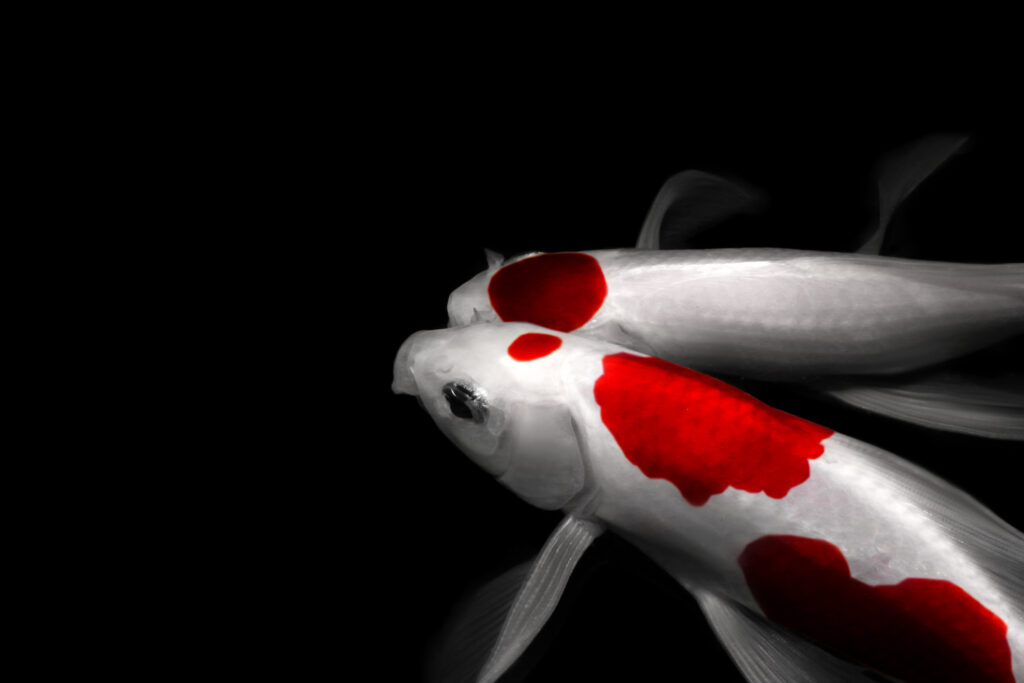
The Tancho Kohaku’s color and design cannot get bred into the fish. The coloration is purely coincidental. As a result, these fish are scarce and in high demand. This variety’s appeal extends to fish with red patches that aren’t circular.
Some fish have a heart-shaped marking on their backs, and these fish can become tourist attractions. Because of the Tancho Kohaku’s potential worth, unscrupulous traders use a scalpel to improve the red marking’s definition.
Tanchos can get produced by any koi variety with more than one hue, such as Tancho Goshiki, a basic red and white koi with shades of blue and black as an overlaying vignette.
Information About Tancho Koi
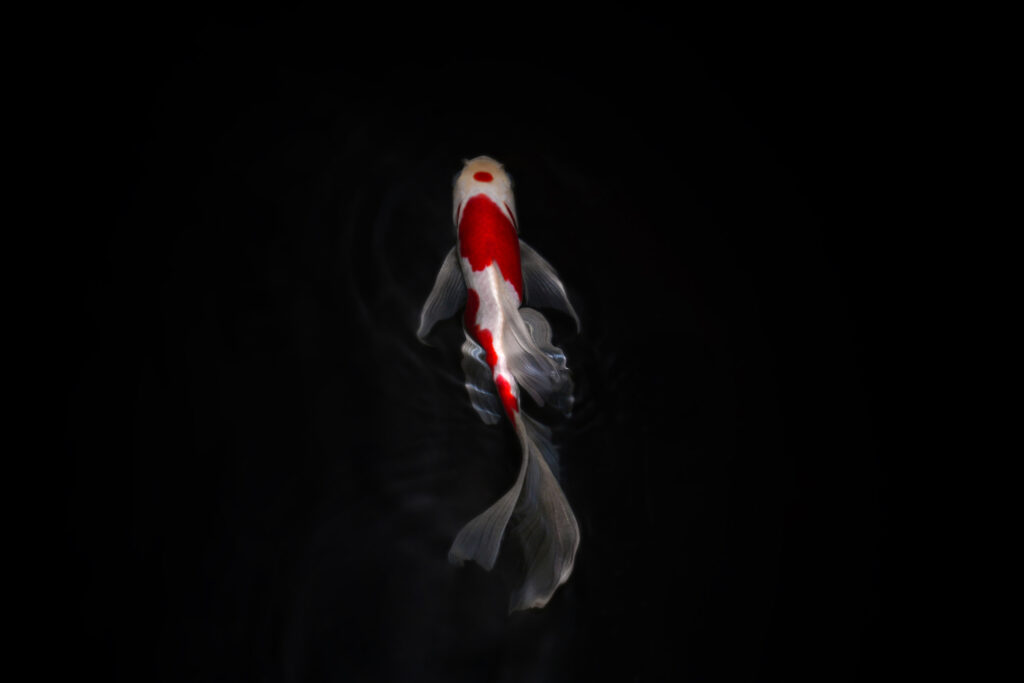
The Tancho Kohaku koi requires no particular care and is not susceptible to illness. The Tancho koi grows at the same rate as other Koi. The best coloration in the red pattern may be maintained using good quality color-enhancing food.
1. Water Quality in Tancho
Tancho koi and any sub-variety within the three Goshiki kinds are more obviously susceptible to water quality conditions. We say “clearly” because you can determine if your parameters are off by looking at your Koi.
For example, a diet heavy in color enhancers, such as spirulina, will cause the white sections of the fish to turn yellow. In the red parts, it can also generate off-color spotting. Water with a high pH might cause the formation of black particles that are not Sumi. In contrast, soft water encourages the growth of Hi and thus may make successfully breeding Tancho even more difficult.
2. Tancho Koi Price
If you’re considering getting a Tancho, remember that they’re almost always more expensive because they can’t be reliably or consistently bred. A variety of circumstances determine it. Depending on size, color, shape, and type, pond quality Koi typically range from $50 to $1500. On the other hand, some show-quality kinds would set you back more than $10,000.
3. How long does it take a koi fish to reach adulthood?
If properly cared for and in suitable habitat, most Koi will reach a size of 20 inches because of genetic predispositions. By the end of its first year, the average Koi will have grown to 6-8 inches in length, and by the age of three, it will have reached full adult size.
4. Tancho Koi Temperature requirements
Some think that water temperature plays a role in the appearance of Tanchos, despite the absence of actual scientific data to back this up. Tancho is said to have a darker red color in colder water and a more orange-red hue in warmer water. All Goshiki love water temperatures between 13 and 26 degrees Celsius, or 55 and 79 degrees Fahrenheit.
5. Tancho Koi Gender
A mature male koi has a slim body. In contrast, a mature female koi has a rounder body, especially during spawning when carrying a nest of eggs. Examine your Koi’s fins next. The pectoral fins of a male koi, those closest to his head, will be pointed and solid in color.
6. Tancho Koi Diet
Even though you would not think of Koi as predatory fish, they are opportunistic eaters who will consume any suitable plants or animals that come their way. That implies they’ll consume other fish, including their babies, occasionally.
Tancho koi frequently get fed diets including color enhancers, such as spirulina or krill, and enough (>30 percent) protein to aid in optimum growth to help develop and maintain healthy color. The diet isn’t that important if you’re not interested in showing your Koi in shows. Tancho koi, on the other hand, have similar nutritional requirements to most other Koi.
Koi may lose interest in eating due to poor water quality or an abrupt shift in habitat. An abrupt drop in water temperature, generally around late autumn or early winter, is the most common reason for a group of Koi to cease eating at the same time suddenly.
Conclusion
The Tancho koi fish is a fish with a red marking on its head called a “Hi.” However, other types of koi fish can also have a Hi on their heads. What makes a Tancho different is that it has no other red markings on its body. The Tancho Koi doesn’t need special care or a diet to grow and survive, but a specific diet can help with other things like the Hi color.
The Tancho represents the Japanese flag, having a white background and a red sun in the center. Because of their red-spotted heads, Tancho koi got named after the Japanese Cranes or Red-Crowned Cranes. They’re almost always more expensive because they can’t be reliably or consistently bred.
References
https://www.raiseupwa.com/popular-guidelines/are-tancho-koi-expensive/


